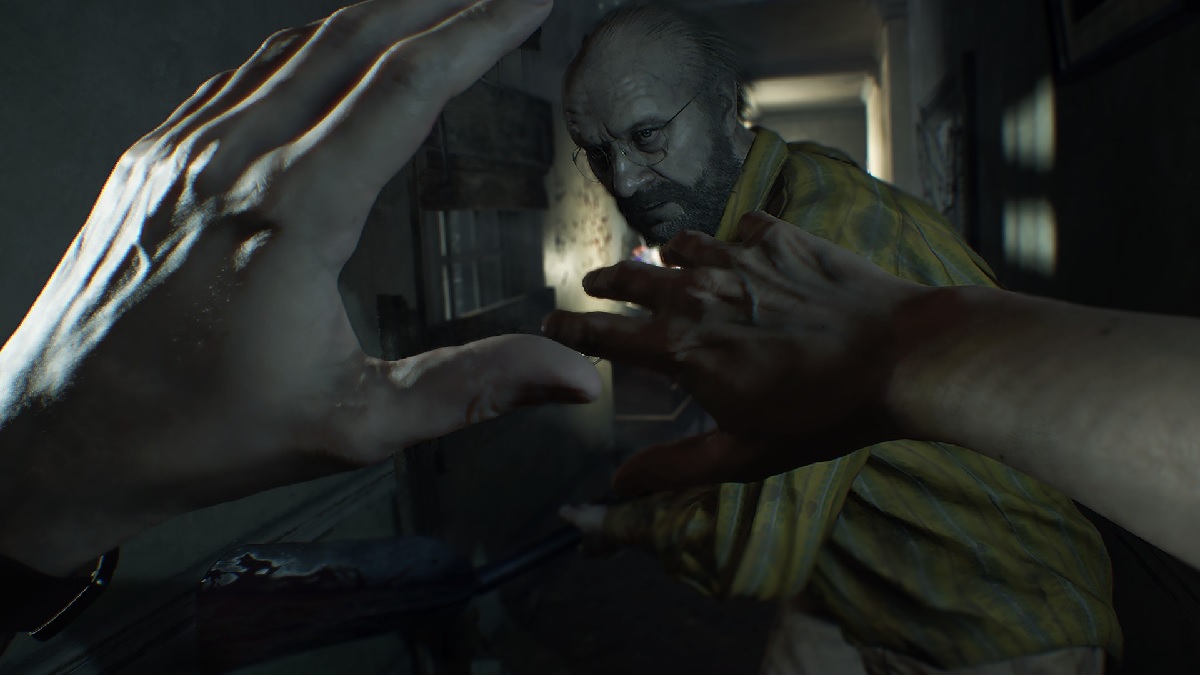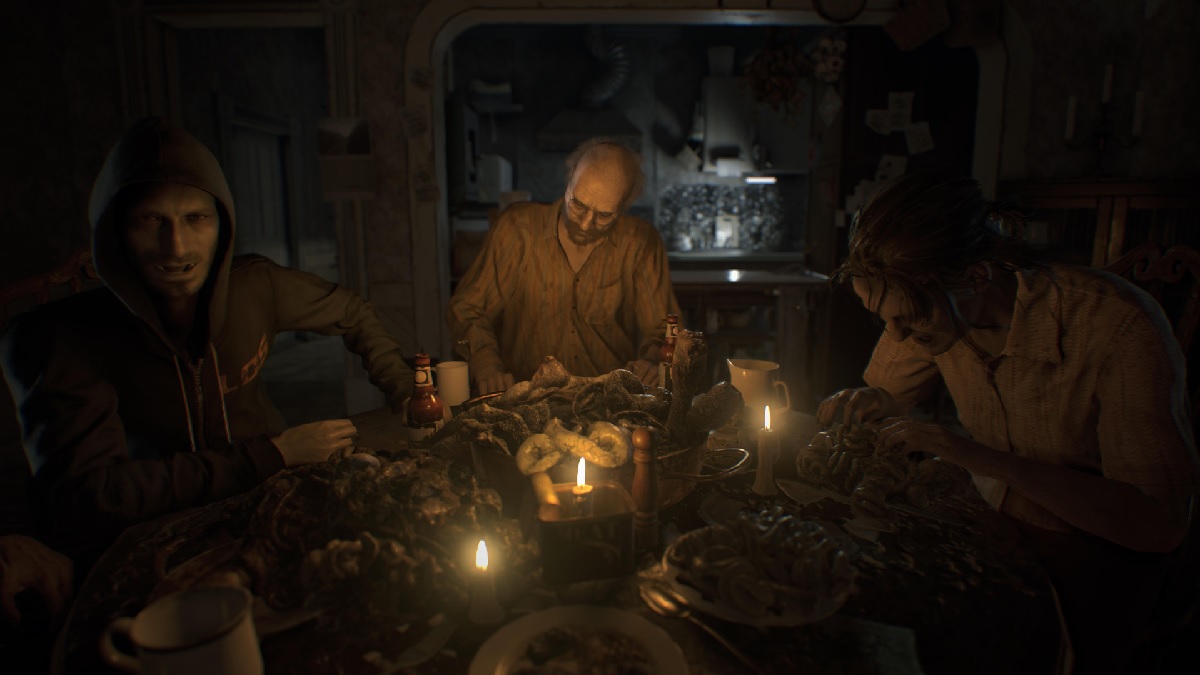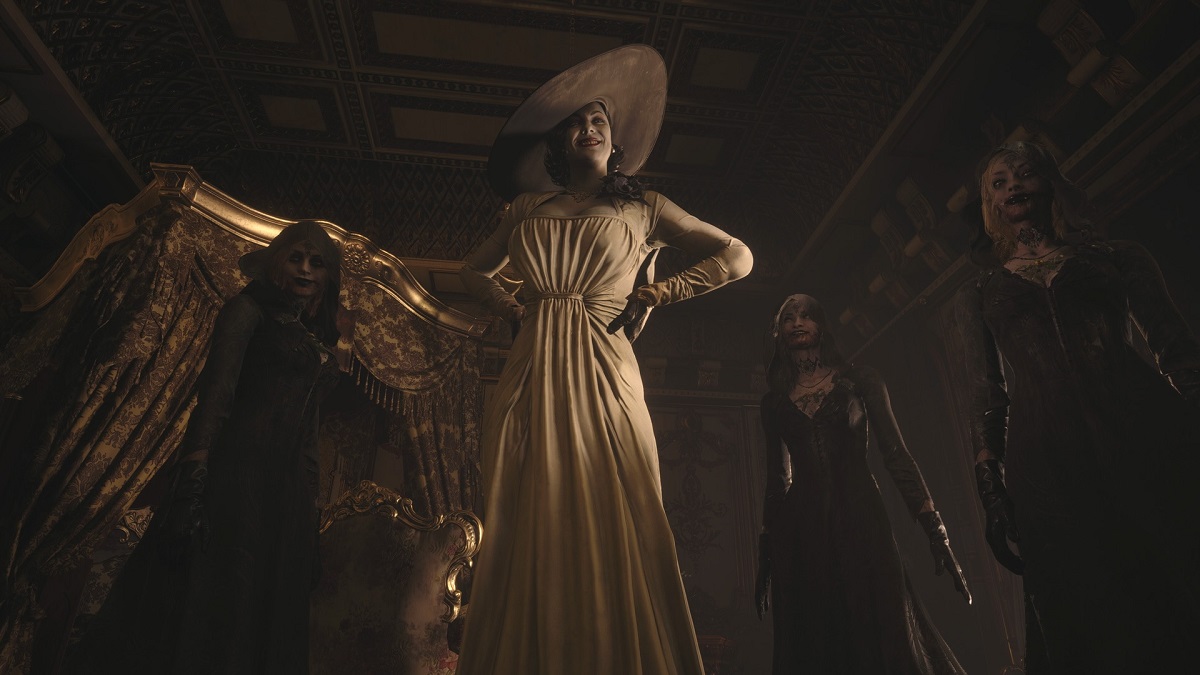New Setting, New Threats, New Perspective
Resident Evil 7 Biohazard was, in many respects, a soft reboot for Capcom’s long-standing series. While containing more than enough easter eggs and homages referencing older series entries, RE7 made a number of major formulaic changes which set it apart from its undead-starring brethren. Instead of blockbuster setpieces or sprawling zombie-infested level layouts, Resident Evil went back to the drawing board, placing the player in (what initially appears to be) an abandoned Louisiana mansion.
Resident Evil 4 took the franchise to new highs. Unfortunately, Capcom saw this as a sign that they should reposition Resident Evil as (almost exclusively) an action, rather than horror, franchise. Throughout the later 2000s and early 2010s, Capcom plied the market with a seemingly never-ending slew of mediocre action-driven titles, such as The Umbrella Chronicles, The Mercenaries 3D, and Operation Racoon City. The mixed reception to said games, along with their less-than-stellar sales eventually made Capcom realize it was time for the franchise to go back to its roots.

Rediscovering A Successful Formula
From the moment that the first reveal trailer, “Desolation”, was shown live at E3 2016, Resident Evil 7: Biohazard clearly drew its line in the sand as being something new, yet familiar. It understood the crucial component behind any decent horror game: Fear. As so many horror films and games have proven over time, one of the best methods with which to pull this off is building tension.
Capcom would later release Resident Evil 7’s “Beginning Hour” demo, a self-contained narrative experience that introduced the player to the decaying residential interiors as well as the frightfully malevolent forces they might find lurking within. The absence of combat here and the minimal number of game mechanics immediately invoked comparisons to Outlast. The photo-realistic capacity of the RE Engine, however, as well as the inclusion of VR support, allowed players to experience the world in new ways that neither Outlast nor prior Resident Evil titles had offered before. Rather than teaching the player to fear the enemies that would populate the world, Capcom ensured that, in RE7, players would come to fear the world itself.
The full game would elaborate on this, of course. While weapons played a more obvious role, these were mainly as a means of escaping from, rather than outright eliminating, (at least at first,) the abominable Baker family. Here, players saw a return to the classic formula of running away from, as opposed to explicitly confronting, a powerful enemy. (Mr. X comes to mind…) This reinforced the utility of another re-emphasized mechanic, that being the gradual unlocking of new rooms, (including safe rooms). increasing the player’s ability to escape one or more pursuing enemies.

Finding the right balance…
The response to Resident Evil 7 has been widely positive, with over 11.3 million total copies sold as of November 2022, and a 94% user review score on Steam. While Capcom initially expressed some disappointment at the game’s initial sales numbers during its Q1 2017 release window, (only garnering 3.5 million copies sold, as opposed to the company’s projection of four million,) the game continued to track consistently over the years, and has since become the fourth highest-earning Resident Evil game to date. (Behind Resident Evil 4, 5, and 6 respectively.)
Resident Evil Village took careful note of its recent predecessors and modified the formula further, retaining Resident Evil 7’s first-person point-of-view, and its narrative beat of having the player finding themselves facing off against a family of adversaries, while also bringing back the more action-oriented direction of Resident Evil 4 and its subsequent sequels. It also focused more on maintaining a consistent cinematic-driven narrative throughout the experience. All while not losing a total grip on the fact that it was a horror game. (As anyone who played through the House Beneviento section can fervently attest.)
While Resident Evil Village also brought back the role of common enemies, (something that Resident Evil 7 had largely disregarded,) the theme this time wasn’t zombies, but rather werewolves. When you have mostly vampires filling out the ensemble boss cast, it seems almost fitting to contrast that by having werewolves as common enemy types. Village felt like a natural amalgamation of many of the main series games that had come before, while still managing to put its own spin on many of said elements.

What’s Next?
When looking ahead at the future of the Resident Evil series, it is likely a safe bet that Capcom has Resident Evil 9 already well into production, although we’re probably still a few years away from a potential release. In an interview with IGN Japan, Resident Evil Village director Kento Kinoshita confirmed that the next iteration in the series would feature a new protagonist, rather than Ethan Winters or any related Winters characters, noting that:
“the Shadows of Rose story [will] conclude the Winters family saga.”
So fans will likely have to take comfort from the resolution found in said Resident Evil Village DLC.
Given the recent trajectory of Resident Evil games thematically and mechanically building upon their predecessors in notable ways, it will be curious to see what path Resident Evil 9 paves. With a new protagonist, and likely a new setting, (if recent games are anything to go by,) will this next upcoming sequel take the opportunity to perform another soft reboot of the series, or continue in the direction set by its two most recent main series predecessors? Only time will tell.








